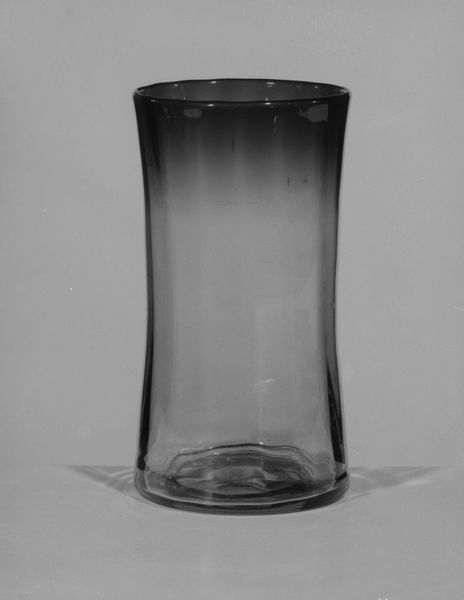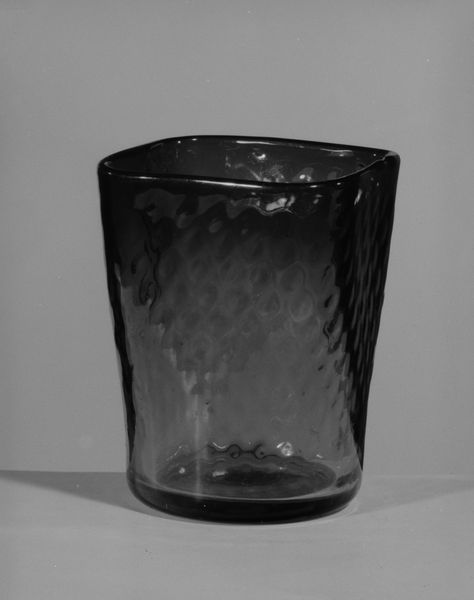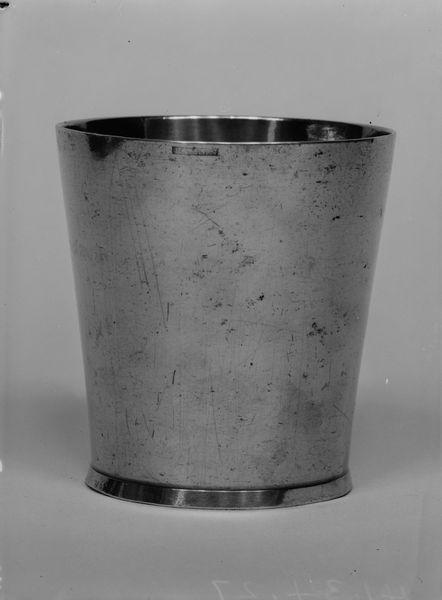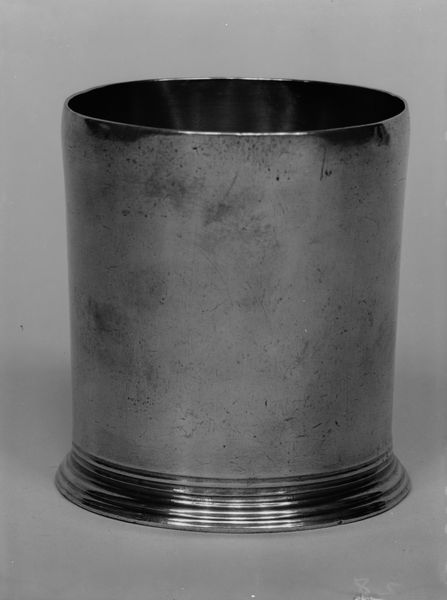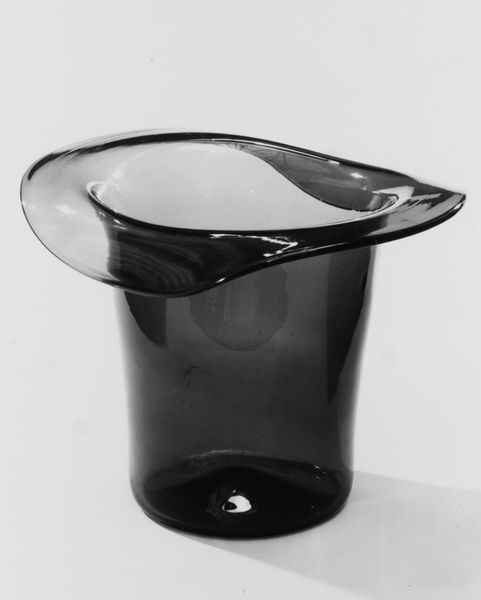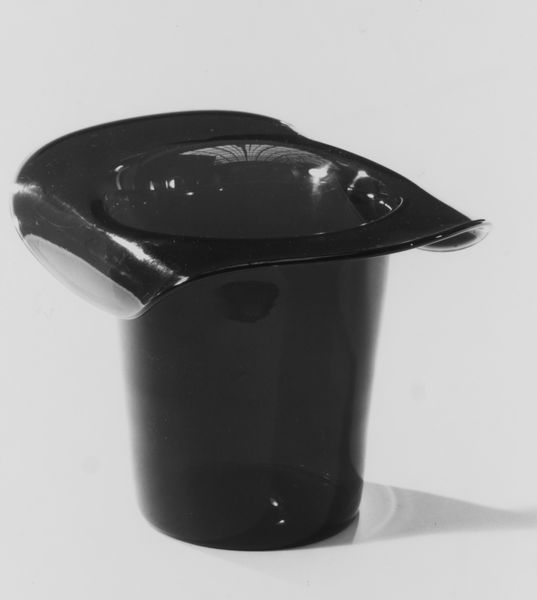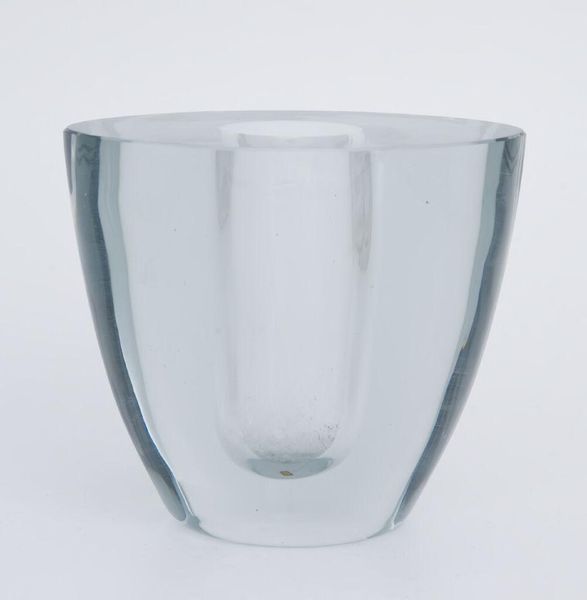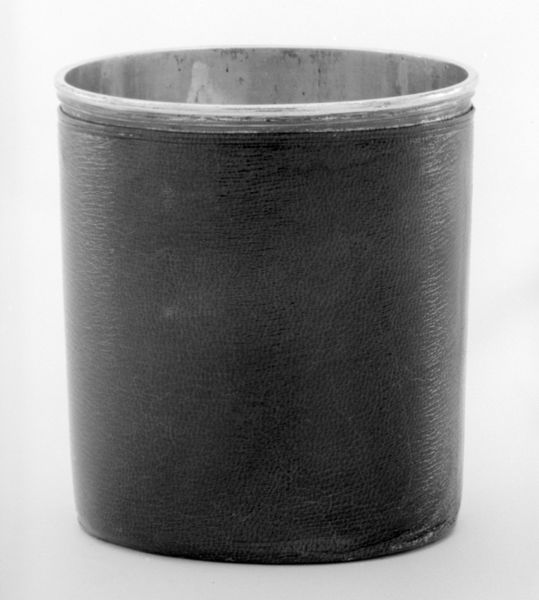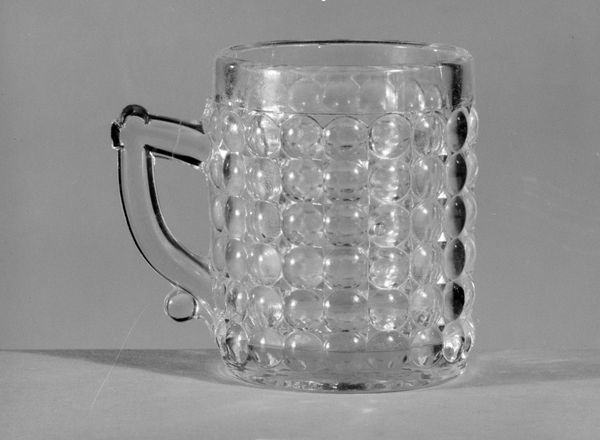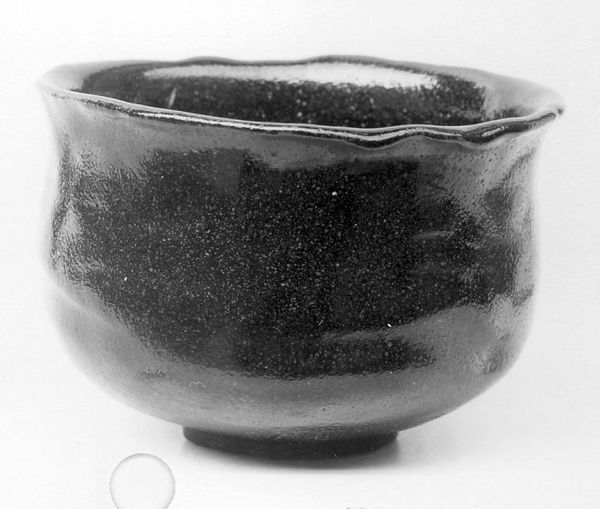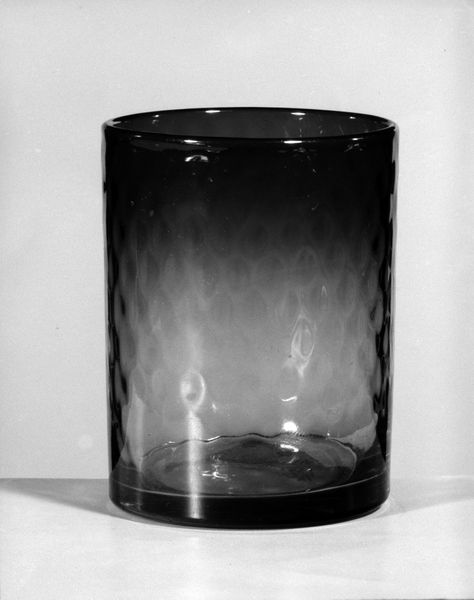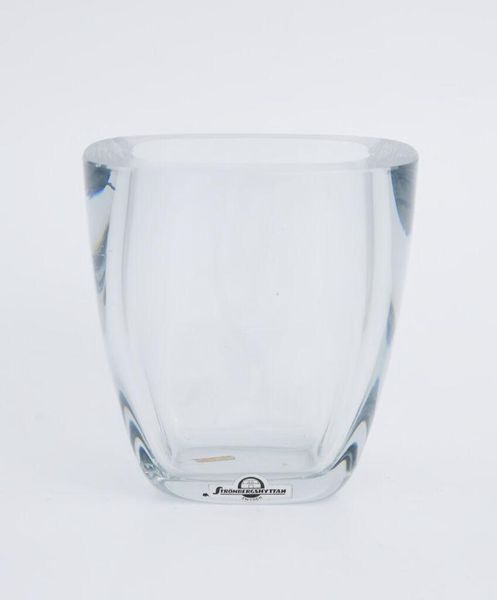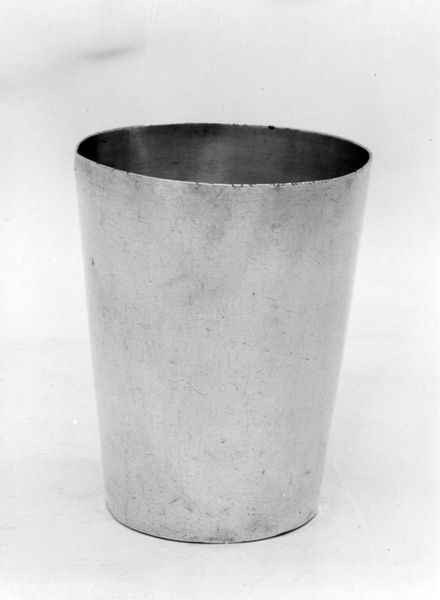
glass
#
glass
#
united-states
#
product photography
Dimensions: H. 3 3/8 in. (8.6 cm); Diam. 2 15/16 in. (7.5 cm)
Copyright: Public Domain
Curator: Looking at this image, what jumps out at you? Editor: Well, it's an arresting composition, minimalist in a way. The clean lines of the glass itself, paired with the elegant, spiraled handle. It evokes a certain stillness, a contemplative quality. Curator: Indeed. This is a photograph of a "Punch Glass" created by the New England Glass Company, likely sometime between 1880 and 1888. When we consider it, we’re really looking at the intersection of industrial production and handcrafted design that was becoming more common during this time in the United States. It currently resides at the Metropolitan Museum of Art in New York. Editor: The dark glass itself—what do we know about its materiality? The way it reflects light, subtly graded...it speaks to quality of production and skilled craftsmanship. It's the color that gives it that subdued, elegant tone. Curator: Absolutely. New England Glass was known for their innovations with colored glass and specialized formulas. This gray-tinted glass could indicate the use of certain additives, like manganese, but further research into their glass-making logs from that time is required for specific composition details. But that specific tinted glass does allow the object to command its space. Editor: So, the material tells a story. And it's interesting, this melding of industrial processes—making a mold, I imagine—with what still feels very much like hand-applied detail. Curator: Precisely. The New England Glass Company relied heavily on immigrant labor. So it becomes crucial to not only acknowledge the design, but to investigate the manufacturing, and by extension the cultural environment that the manufacturing emerged from. Editor: I see what you mean. By visually examining the object as something culturally contingent, we unlock deeper meanings than what lies on the surface of a glass. Curator: Exactly! It allows the object to speak about class and immigration within that time. It makes you wonder what labor processes took place in making a drinking vessel that has all of that deeply woven in it. Editor: An object with visual serenity, carrying quite the historical weight. I find that really compelling. Curator: As do I!
Comments
No comments
Be the first to comment and join the conversation on the ultimate creative platform.
